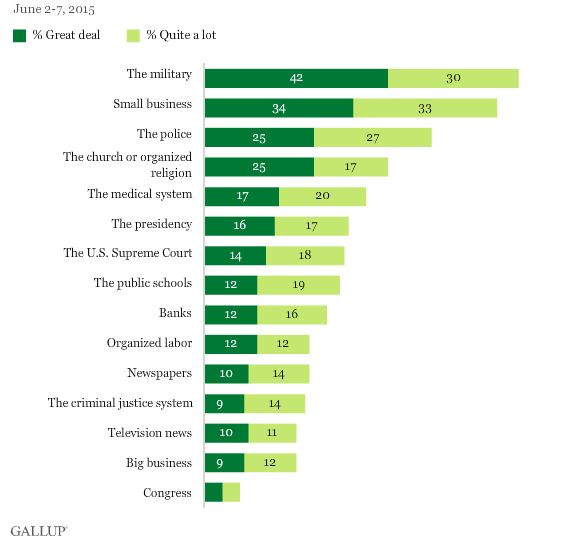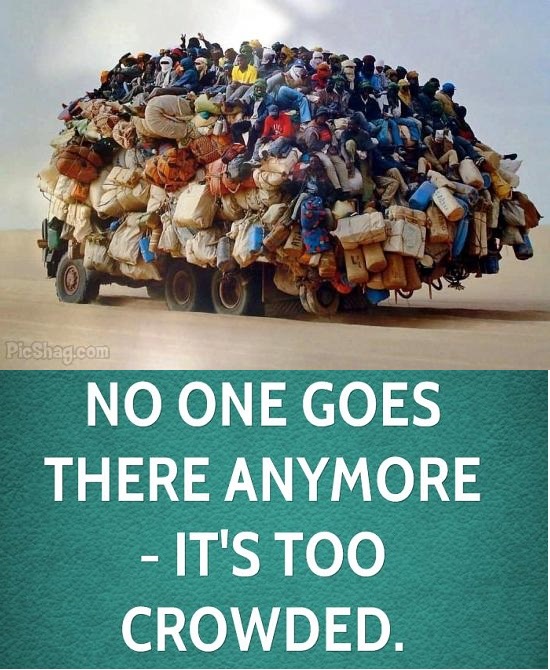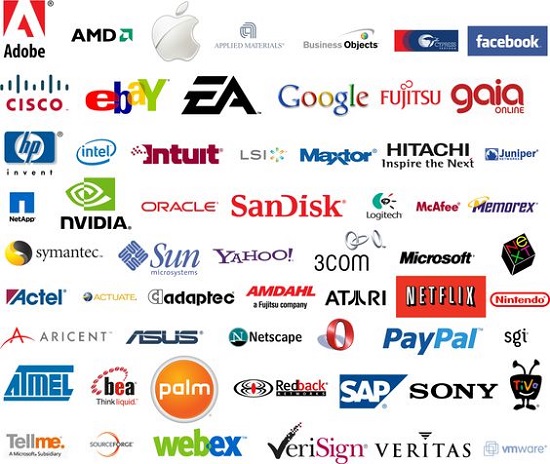Founded in 1998, The Tech Museum of Innovation (“The Tech” for short) in downtown San Jose, CA is an impressive facility, located in the heart of Silicon Valley. Ironically, the acoustics are far from state-of-the-art. We attended the Music for Minors gala on April 7, 2019, sitting at a table whose other guests (who included The Tech’s board chairman) agreed with us. This is a high-profile example, but we believe that most facilities lack thoughtful design (drapes, acoustical tile on the ceiling, etc.) to dampen challenging sounds or noises. We can only guess that acoustics get short shrift when buildings or rooms are designed and constructed. Restaurants, including upscale ones, are usually lacking in sound-dampening.
Tag Archives: Silicon Valley
Needless Tech Giants’ Hiring Worsens Silicon Valley Housing Shortages and Traffic Jams
We have twice before posted strong pleas for the giant tech companies—especially Alphabet/Google/YouTube, Apple, and Facebook—to stop expanding their Silicon Valley facilities rather than creating/expanding sizable operations in other cities. They’re mostly software companies, which could be located anyplace with high-speed data transmission capabilities!!! Are these companies afflicted by cases of hubris?
We wonder why all those cities who were campaigning for the Amazon HQ2 aren’t similarly campaigning for expansions of other tech giants.
We also wonder why Silicon Valley communities have not been able to either (1) extract enough money from these companies to compensate the many victims (long commutes, wasted time in traffic jams, inability to find housing, homelessness, etc., or (2) tax the companies so much that it makes it uneconomic to expand there.
Other organizations that are keeping up the good fight include the San Francisco Peninsula Resident Association.
One Less Big Tech Company to Pile Into Already-Overcrowded Silicon Valley
The good news today is that Amazon will NOT locate its second headquarters (with up to 50,000 people) in the Bay area. So San Jose mayor Sam Liccardo will get his wish. This is a welcome change from past practices by Silicon Valley cities, when city councils have welcomed large, tax-paying companies despite the downsides of their new presence.
Every day Silicon Valley denizens read about high-and-rising house prices and apartment rental rates, traffic jams and ever-longer commutes, and other phenomena caused by the irrational decision-makers at the likes of Adobe, Amazon, Facebook, and Google … AND local city council members with dollar signs in their eyes. We have lobbied for regionalization to spread the employees and economic benefits more evenly across the country, for thoughtful consideration of ALL aspects of the situation (including housing and traffic flow), for thoughtful consideration of ALL aspects of the situation (including housing and traffic flow), and to grow their Silicon Valley operations at sensible rates.
Unfortunate but Unsurprising Suboptimization in Silicon Valley
Don’t Google and Amazon Read Businessweek? At least Google has the excuse that they were born and grew up in Silicon Valley and have always lived here. So it may be instinctive for them to keep on wanting to out-Silicon-Valley Silicon Valley. As for Amazon, Jeff Bezos’ historically bare bones operating philosophy has apparently changed if he now wants to pay big bucks for the facilities and staff in Silicon Valley.
Even worse, no other than the CEO of Silicon Valley Leadership Group who was just given accolades by the San Jose Mercury News may be one of the villains. Although Carl Guardino wants to “exorcise the twin demons of housing shortages and traffic jams” he appears to be focusing only on the traffic jams part. (This, in turn, may be due to the fact that he commutes to work by bike 17 miles each way, from tony Monte Sereno to the airport. He may actually get to work faster that way than by car, but Google Maps shows one hour and twenty minutes, though there are fortunately two alternatives that are trails. The third is via an expressway, which is not cyclist-friendly.) He apparently expects somebody else to deal with the housing shortage, a poignant example of suboptimization. (Interestingly, the definer of suboptimization is a San Joe State professor, who no doubt has lots of local examples to cite.) Apparently HE thinks that having fast transportation allows people to live farther away, where housing is affordable. WE think that the proposed “Google transit village” (that puts 20,000 Google employees in offices adjacent to Diridon Station) will be a nightmare because it puts too many eggs in one basket. And if you want to know what Silicon Valley residents REALLY think, have a look at the Comments accompanying the article about Carl Guardino.
Another consideration is that past experience regarding the preferences of high-tech company employees is that managers have families and prefer to live toward the San Jose end so they can have grass to play on, whereas single guys writing code prefer to live in San Francisco so they can party. Where will the party scene shift to? Will hungover software engineers want to commute from San Francisco to Diridon Station on BART? And can their bosses afford to live in closer proximity to Diridon Station? Houses in nearby Sunnyvale are selling for nearly $800,000 over their asking prices.
What about Amazon? While those with vested interests—politicians, city planners, tax assessors, etc.—are positive, knowledgeable local residents (and newspaper columnists) are not. Maybe Amazon’s own planners and cost accountants will horrify Jeff Bezos so much that he will choose some other city on the Businessweek pictogram who will appreciate him more and charge him less. Or maybe he will get creative with a twist like the giant factory towns in China, which have dormitories and apartments and stores, and propose to build giant apartment buildings to overcome the housing and traffic challenges.
Silicon Valley Continues to Be #1 Technology Hub; Why Not Boulder, CO or Ithaca, NY?
Despite our repeated reminders that the multiple woes—especially housing prices, traffic gridlock, and long commutes—of tech companies’ building large staffs in the San Francisco/San Jose area, nearly all of these mainly-software organizations continue to ignore the logic of setting up new operations in other cities in the U.S. And these other cities would love to have them locate their operations in their respective cities. This phenomenon, coupled with the September 13 opening of the vaunted Cornell Tech in New York City, is so noticeable that Bloomberg Businessweek went to considerable effort to prepare a pictogram for its September 11 issue that includes about 300 metro areas (but they do not appear to be the 300 most populous cities in the U.S.) is so detailed that they couldn’t include it in their online version and an article apparently so basic that they couldn’t include it in their print version. On the horizontal (“good stuff”)axis it combined nine positive ways: rates of college education, science and engineering majors, top universities, headquarters of big tech companies, venture capital investment, share of jobs in computer-systems design and related services, broadband subscription rates, independent coffee shops (huh??),and commutes by bike/public transportation/on foot. On the vertical (“bad stuff”) axis it combined three negative ways: high home prices, lots of income inequality, and long drive times. It weighted these 12 ways equally (what else could they do?) and plotted a scattergram with city names as labels. In the upper lefthand corner (high on both good stuff and bad stuff) is the San Francisco/San Jose area (Silicon Valley), which is in the biggest “quadrant” (the quadrants are quite unequal in area) called “Both the good and the bad of Silicon Valley”. The upper righthand quadrant is “Unequal and expensive, but not techie”, the lower lefthand quadrant is “Tech without the downsides”, and the lower righthand quadrant is “ Least like the Bay Area”. The authors highlighted Boston (not surprisingly, due to its many good universities and Route 128 tech companies), Boulder, Co (high percent of households with broadband access), and Ithaca, NY (low housing cost). Ithaca??!! Well, it’s home of Cornell University which, together with partner Israel’s Technion, created Cornell Tech, and it’s the most techie of the Ivy League. (It’s also our home town, with nice summers, but awful winters … especially compared with Silicon Valley.)
Sports More Important Than Technology Business in Silicon Valley Newspaper
The Mercury News’ demoting its business coverage to the back pages of the Sports Section was a populist victory even before Trump’s election. Or does this situation simply derive from the biblical truism “no prophet is accepted in his hometown”? In any case, the rest of the world—including major newspapers—seems more entranced with the goings-on in San Jose and surrounding cities. The New York Times and Wall Street Journal have permanent staff in Silicon Valley who seem to turn out significantly more column-inches of reporting and opinion about technological accomplishments in this geography than do the valiant-but-outnumbered technology staffers at the Mercury News.
This demotion came a few months after the April 2016 renaming of the San Jose Mercury News to to reflect its merger with the San Mateo Times. But the spirit of San Jose, which some years ago was dubbed “the USA’s largest truck stop”, lives on in the focus of its printed media. (Apparently a number of other cities in the U.S. claim that theirs is the largest, and a number of locations have subtitled themselves “Silicon XXXX”, like “Silicon Prairie” which can refer to Dallas-Fort Worth or the Chicago area or a multi-state area of the upper Midwest.) We are a bit baffled because the advertisements in the Mercury News don’t seem to be for products and services that the typical sports fan would buy.
Facebook and Google Create New Homeless People in Silicon Valley in 2016
They may not be sleeping on park benches, but they’ll never be able to afford a house in Silicon Valley. That’s because the household-word high-tech companies (Apple, Facebook, Google, et al) in the San Francisco Bay Area are adding jobs but no one is adding commensurate numbers of housing units, and the prices of homes is skyrocketing.
The iconic independent bookstore in Menlo Park, Kepler’s Books, and Peninsula Arts & Letters, sponsored a well-attended public forum, “Housing Crisis Stories”, on August 18, 2016. The motivation for the meeting was the disconnect between the huge number of new jobs being created by the giant high-tech companies like Facebook and Google and the tiny number of new housing units being created. According to the local paper, The Almanac (which covers the tony cities of Atherton, Menlo Park, Portola Valley, and Woodside), San Mateo County added 55,000 jobs but only 2,000 housing units (homes plus apartments) between 2010 and 2014. The main source of new jobs is these high-tech companies, but other real estate development is also favoring offices at the expense of housing units.
Except for me (in my TechnologyBloopers persona), who dealt with the new jobs, everyone dealt with the housing shortage. There appeared to be NO representatives from the nearby, Menlo Park-based, Facebook. Many of the attendees were either personally the victims of the rapidly-rising home prices or apartment rents, or were recounting stories of other victims. The poster child for these victims is a Palo Alto planning commissioner—a tech lawyer with a software engineer husband—who is resigning and moving to Santa Cruz because they can’t afford to live in Palo Alto and raise a family there.
Unfortunately, individually they have no power to escape their victimhoods. They will have to band together to elect officials who DO have some power. City Councils in those cities affected will need to be very proactive in forcing the tech companies and real estate developers to deal with the housing shortage. And neighboring cities need to cooperate with each other so that jobs created in one city (which result in revenue both to that city government and to retailers in that city) do not force other cities to deal with housing those new employees.
The problem seems to be a failure to optimize the OVERALL combination of jobs and housing. The technology companies are a big part of the problem and they need to be a big part of the solution. And one way those companies, at least the ones like Facebook and Google whose principal activity is software development (which can be done most anyplace), can be a part of the solution is for them to locate large portions of their staff in regional offices in cities far away from Silicon Valley.
There were some creative solutions mentioned, which would help add housing units, IF the groups concerned would cooperate to change the rules for zoning and construction. One was to build several floors of housing above parking garages. Another was to replace single-story strip malls with multi-level buildings having the retailers at ground levels and housing at the higher levels.
There was one additional issue that seems unique to Palo Alto and Menlo Park (among the cities on the San Francisco Peninsula), namely the gentrification of (formerly) low-priced residential housing in East Palo Alto and East Menlo Park, and the related issues of racism because of the relatively high percentage of people of color living in those cities. Fortunately, those cities were well-represented in the meeting, and hopefully their inputs will continue to be carefully considered as solutions to the jobs/housing are implemented.
Can Thoughtful U.S.-Wide Economic Planning Enable Orderly Growth?
Skyrocketing house prices and apartment rents, long and slow commutes, overcrowded schools, etc. not only dramatically diminish peoples’ quality of life but can choke off economic growth in places like Silicon Valley. (And Silicon Valley is not unique; e.g., Boston has a similar problem.) What can be done about it? We need to think bigger, in terms of geography. Every sizable city or cluster of nearby cities has some form of LOCAL regional economic development authority. But those authorities are sub-optimizing. We believe that what is needed is a nationwide advisory council AND a change in thinking by large companies. Germany is a good example of what is possible. We can understand to some extent the economies of scale of microchip manufacturers for examples, but it especially baffles us that technology giants like Facebook, Google, Oracle, eBay, and LinkedIn, which are principally software companies, insist on building mega-campuses in Silicon Valley. Seems to us that—using their own technology and realizing that software can be written anyplace—they could do large portions in regional centers. Even Apple, who farms out much of their manufacturing to Chinese companies like Foxconn, very likely would benefit if their employees spent more time working and less time commuting to their new giant building (which will almost certainly exacerbate the already horrendous traffic jams in that area).
There are lots of other attractive cities in western states with a critical mass of local services and attractions that would welcome an influx of well-paid, well-educated employees: for example, Austin, TX; Denver, CO; Seattle, WA; Portland, OR, Los Angeles, CA; San Diego, CA; Sacramento, CA; and Phoenix, AZ. Similarly for eastern states.
GoPro’s Stock May Be Correctly Priced

GoPro’s CEO Nick Woodman holds a GoPro camera in his mouth as he celebrates his company’s IPO at the Nasdaq MarketSite in New York, Thursday, June 26, 2014. GoPro, the maker of wearable sports cameras, loved by mountain climbers, divers, surfers and other extreme sports fans, said late Wednesday it sold 17.8 million shares at $24 each in its initial public offering of stock. (AP Photo/Seth Wenig)
We hate to tell you we told you so, but … we told you so (see our post of July 3, 2014). Investors were initially stampeded by the sex appeal and attitude of the surfer dudes who were taking exciting videos of their surfing exploits, but now their motto may have changed from “eat camera” to “eat crow”. Or, to segue to another mixed metaphor, this one-trick pony may have done its one trick already, and all the early adopters have already adopted. We wonder how many earlier buyers are actually continuing to use the GoPro, and how many newer buyers are putting up with the flawed documentation, steep learning curve, and difficulties of using the product to take videos and still pictures they are proud to post or to show their friends.
And what about competition? The GoPro Hero4 Silver costs $400. The Garmin Virb line has models for $200-400. But the $100 Polaroid Cube may be fine for the rest of us. Or the $76 SJCAM SJ4000. Or the $64 entry-level Yi model from Chinese smartphone maker Xiaomi (not as many features as the GoPro Hero4 Silver but some interesting ones such as selfie stick support).
Gallup Poll Says Americans Prefer Small Business; Then Why So Many Mergers?

Although Americans’ confidence in most major U.S. institutions remains below historical levels for most institutions, two institutions are notable for rating higher than their historial levels, the military at 72% and small business at 67% (as measured by the sum of respondents who said “a great deal” or “quite a lot” of confidence), according to the June 2-7, 2014 Gallup Poll. Big business is a woeful 14th on the list and is rated at a meager 14%.
We at Technology Bloopers find the recent spate of acquisitions and mergers within both the technology sector (e.g., Western Digital and SanDisk, and Lam and KLA-Tencor) and other sectors (e.g., Walgreens and Rite Aid, and AB Imbev and SAB Miller) distressing, if only because “Absolute Power Corrupts Absolutely”. And its first cousin agglomeration is not much better.
Do beer drinkers really want a world of boring lagers or one of tasty craft beers? Or do diners really want their meals increasingly dominated by garish and uninteresting gigantic chain restaurants (big business) serving below-average variety, taste, and healthiness of food or a world of eating with lots of tasteful (in both décor and food) provided by smaller, independent businesses with the owners on site? We didn’t think so.






